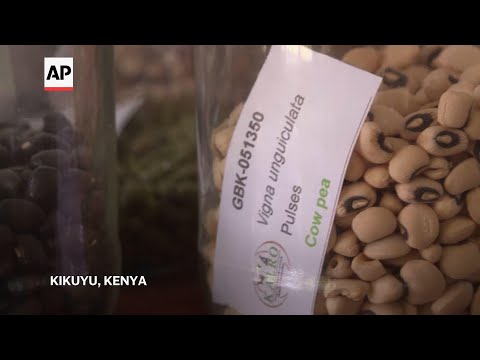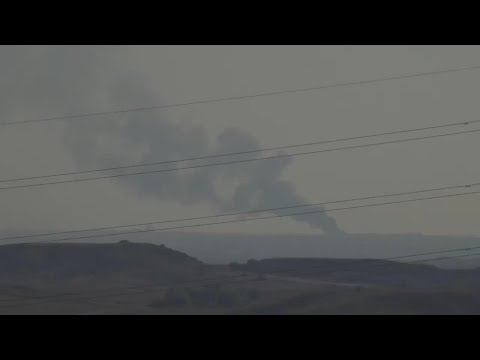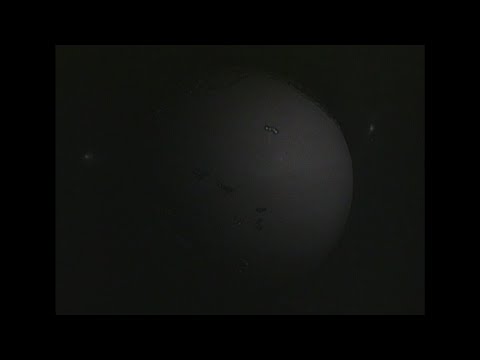(29 Jan 2025)
RESTRICTION SUMMARY:
ASSOCIATED PRESS
Kikuyu, Kenya – 14 November 2024
1. Pan of seeds in jars
2. SOUNDBITE (English) Desterio Nyamongo, Director of Genetic Resources Research Institute: ++STARTS ON PREVIOUS SHOT AND PARTIALLY OVERLAID BY SHOTS 3 TO 5++
"We realise that some of the traditional varieties that we had abandoned then are actually more resilient to climate change. So, it would be wrong for farmers, especially farmers in the marginal areas, to start thinking that using the indigenous seed is backwardness. Far from it."
3. Seeds in jar
4. Genetic Resources Research Institute worker arranging jars of seeds
ASSOCIATED PRESS
Gilgil, Kenya – 11 December 2024
5. Aerial of farm
6. SOUNDBITE (English) Francis Ngiri, farmer: ++PARTIALLY OVERLAID BY SHOTS 7 AND 8++
"We use wood-ash to preserve our seeds. No weevil can survive on wood-ash because it is bitter and even the smoke. So, most of these traditional methods, those that grandpa used to employ when they were preserving their seeds, it is still viable up to today."
7. Ngiri showing seeds preserved in ash in a sack
8. Tilt down of seeds in glass bottles at Ngiri’s home
ASSOCIATED PRESS
Kikuyu, Kenya – 14 November 2024
9. SOUNDBITE (English) Desterio Nyamongo, Director of Genetic Resources Research Institute: ++PARTIALLY OVERLAID BY SHOTS 10 TO 15++
"There are different approaches to conserving genetic resources. One of them is conserving as a seed, in seed banks. Now, plants produce two types of seeds. There are those seeds that withstand desiccation with a very low moisture content, and they can be frozen under low temperatures, minus 20 (degrees Celsius) in our case here. Those are technically referred to as orthodox seeds. So the orthodox seeded species are conserved and can be conserved in a seed bank like this one."
10. Various of Genetic Resources Research Institute worker preparing seeds for storage
11. Worker dissecting seed and recording variables
12. Worker placing seeds inside a growth room
13. Close of thermometer
14. Germinated seed inside a plastic container
15. Worker going into a cold conservation unit
STORYLINE:
Tucked away in a lush, forested area of central Kenya’s Kikuyu town, the National Seed Bank stands as a crucial safeguard for the future of the country’s agriculture.
Inside two chilly rooms of a government building, more than 50,000 seed varieties are cataloged and stored.
The bank was established in 1988 after the realisation that some traditional varieties of seeds were being lost, an occurrence that is becoming more common with climate change. It aims to conserve seeds for research and reintroduction to farms.
“We realise that some of the traditional varieties that we had abandoned then are actually more resilient to climate change,” said the director of the Genetic Resources Research Institute that operates the bank, Desterio Nyamongo, referring to hybrid seeds that must be bought every planting season.
He said the some of bank’s seeds also were found to be more resistant to diseases and pests and were high-yielding.
This gives hope to a country that relies heavily on rain-fed agriculture instead of irrigation, leaving it more vulnerable to climate shocks like drought. The sector contributes a third of Kenya’s GDP.
But in Kenya, another complication has emerged.
Farmers in recent months suffered losses in the millions of shillings (tens of thousands of dollars) after planting counterfeit seeds bought from private sellers.
Kenyan officials have acknowledged that the seed sector is critical.
The next hearing in the case is in March.
Find out more about AP Archive: http://www.aparchive.com/HowWeWork
Twitter: https://twitter.com/AP_Archive
Facebook: https://www.facebook.com/APArchives
Instagram: https://www.instagram.com/APNews/
You can license this story through AP Archive: http://www.aparchive.com/metadata/youtube/354e82a6eda240b79b027ea7d4d84c48
Author: AP Archive
Go to Source
News post in February 3, 2025, 12:05 pm.
Visit Our Sponsor’s:
News Post In – News





